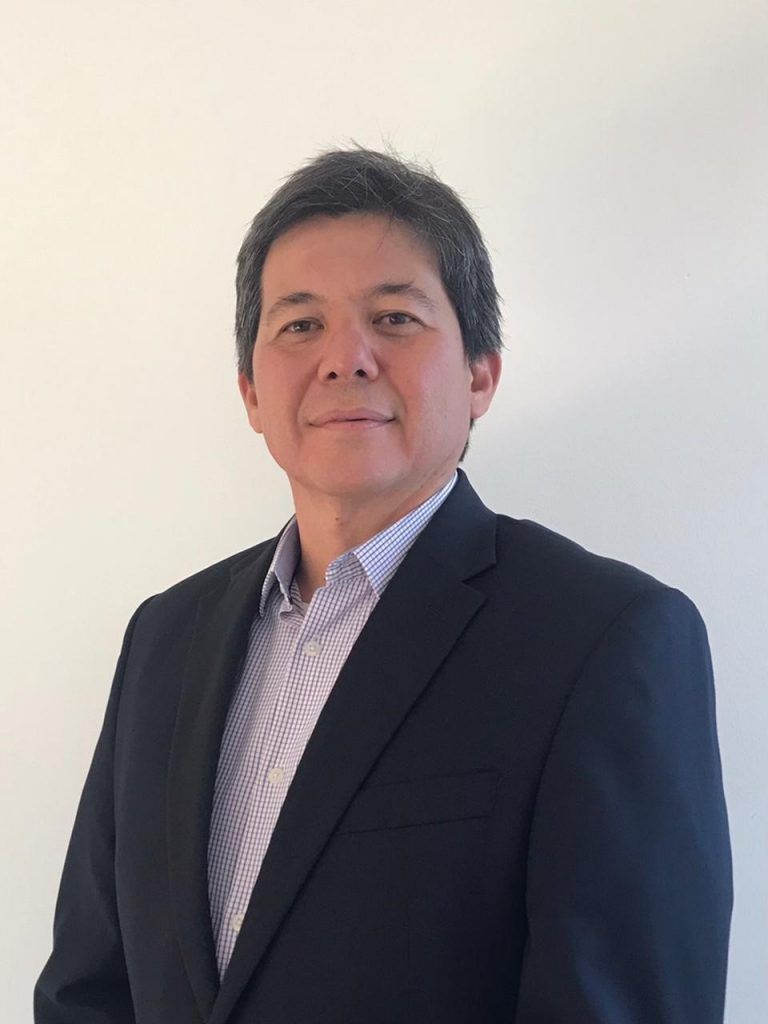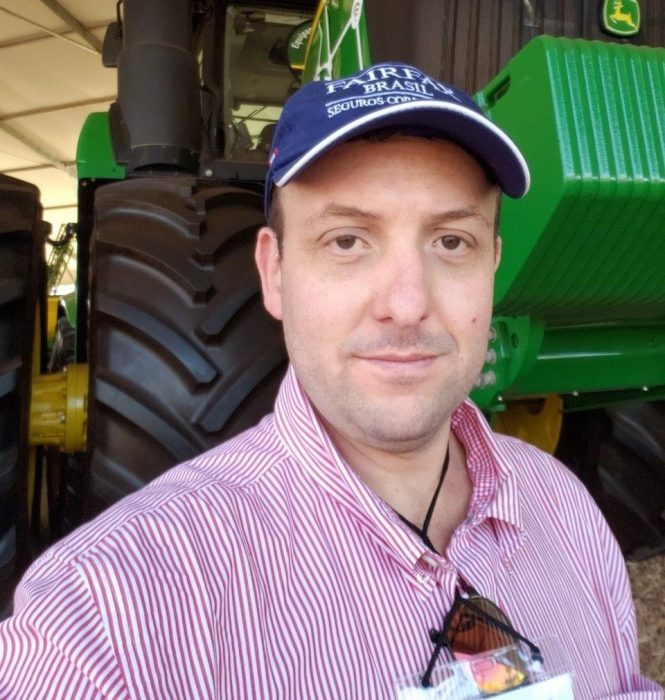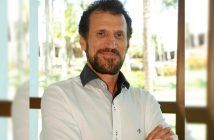Of the 1.7 million hectares of Arabica coffee in Brazil, only 160,000, less than 10%, have some type of insurance contracted. The expectation is to serve 30,000 hectares in the future harvest
The latest IPCC report on the world’s climate leaves no doubt: thanks to the action of man, we will have an increasing frequency of extreme events such as frosts, droughts and torrential rains. These phenomena will significantly affect the way we work in the field, especially on coffee plantations.
“If we continue emitting carbon as we are, the scenario is catastrophic, as there could be an increase of up to 4oC in temperature, which will directly affect Brazilian agriculture as a whole. In other words, regions that today produce certain crops will most likely no longer be able to be produced locally,” explains the coordinator of the Research Portfolio on Climate Change and Agriculture at Embrapa, Giampaolo Queiroz Pelegrino.
But how to prevent losses from coffee crop failure from now onward? Why is it that only 10% of Arabica coffee producers in the country have contracted insurance? According to the National Federation of General Insurance (FenSeg), low temperatures and their effects can contribute to an increase in coverage of the next coffee harvest. Between January and April of this year alone, the contracting of agricultural insurance by rural producers grew 41%.
Until recently, coffee producers in Brazil were not very adept at insurance and those who contracted it prioritized coverage for cases of hail alone. Out of the 14 companies that carry out agricultural insurance in the country and participate in the FenSeg Committee, only six operate with frost coverage for coffee. In other words, of the 1.7 million hectares of Arabica coffee in Brazil, only 160,000, less than 10%, have some type of insurance contracted.
Poorly designed products, pricing and lack of transparency in producer data
For the head of Agro at Swiss Re, Gláucio Toyama, the insurance market for Arabica coffee, above all, did not grow much because insurance companies did not have any solutions that would meet the needs of producers. “The available insurance was not adequate, thanks also to the lack of transparency of farmers themselves. If I, as an insurance company, do not have clear information on the farm’s production, from plot to plot, I cannot offer a suitable insurance at competitive prices,” he says.
Toyama also sees the lack of rural insurance taken out by farmers as a cultural problem. “Producers do not make the decision to contract an insurance package based on the perspective of production cost. They know they need to invest in new technologies, in machinery, but insurance is not part of that list. As a matter of fact, it wasn’t. Days before the last severe frosts we had this year, when weather services alerted growers, everyone called the insurers to ask for a policy. So, this is a sure risk, it’s the same thing as hiring car insurance, knowing days in advance that you are going to crash your car,” explains the executive.

In order for the insurance industry to design an ideal product for coffee growers, Toyama points out that it is necessary for insurers to have more precise and accurate information on producers. “The variability in how the crop is managed makes it very difficult to define whether the risk is the same as that of a neighbor or another producer. Cooperatives do not always have a consistent information base. We do not have access to information on adequate productivity, plot by plot, number of trees, age of coffee plantation, total area to be insured. If I don’t have the necessary information, the insurance company works by average, which makes the product more expensive,” he says.
Another point that Toyama raises is related to the biannuality of coffee production. “This last frost will affect producers’ productivity next year, in 2022. How do you create a product that has, for example, a tax subsidy and that has the need to protect a future crop? We are very interested in working with specialty coffees, but there is a lack of partnerships with cooperatives, producer associations, trading companies, agrochemicals, actually from the entire chain, so we can build a value proposition for the sector. But we need to know the risks,” he emphasizes.
Swiss Re currently offers parametric insurance: “We are currently discussing with a partner company a product that can insure the crop in the event of a prolonged drought. We already know that the next harvest will be affected by the drought, which will actually take place in 2023. We are setting an insurance aimed at the problem of water deficit that does not require the information from producers. I just need to know if it’s going to rain or not. We are remodeling the risk analysis to create a product that looks at events in a more macro way and that, over time, enable us to adapt to other needs of specialty coffee producers,” he exemplifies.
New Age of Agricultural Insurance
The damages registered this year in the Southeast region are harming the future harvest, which will bloom in September. The current crop has already been harvested. “Insurance has to be considered a subsidized input, but unfortunately, this is not how coffee growers perceive it,” explains Fairfax agribusiness director Fabio Damasceno.

Fairfax, meanwhile, is launching a new coffee insurance with a different format. The company is re-evaluating all agricultural insurance models due to climate change and believes that the time has come to democratize agricultural insurance.
Insurance has to be considered a subsidized input but, unfortunately, this is not how coffee growers perceive it.
The Fairfax Café project emerged at the beginning of last year, then the frost came and messed everything up. My phone kept ringing and ringing. We are meeting with the cooperatives. At first, the frosts acted as drivers and a great showcase for the product,” he explains.
“In recent events, the losses occurred in the tree, in the coffee plant; in fact, we don’t know how it will impact production. But, there is a way to compensate for these losses and with a certain tranquility for the next year,” he says. Of course, with the release of international and national and national climate reports, the data really matter. Each degree change in climate can trigger an event that can be repeated 30 times in 50 years. It’s a brutal change for insurers too,” he explains.
“We were contacted by a large specialty coffee company, which operates abroad linked to another company, with the objective of bringing a solution for parametric insurance to Brazil. This product is sold mainly in Colombia, whose coffee production is 100% insured, thanks to the strength of the cooperatives, which makes it much easier to price,” he says.
The idea was to replicate this model in Brazil, but the production of specialty coffee there is very different from ours, as it is less technological and uses manual harvesting. “Perhaps, this type of insurance is better applied to conilon coffee producers in Espírito Santo, whose product has a greater appeal with this parameter. Our big challenge now is the LGPD,” explains the director.
From January to April this year, the agricultural insurance market grew 41% in agriculture, according to data from Funenseg
Last year, Fairfax launched an insurance for damage caused by frost and hailstorms to protect the Arabica coffee plantation. Traditionally, the available insurances are aimed at the coffee plant, that is, in the event of an accident, the conventional insurance covers cultural treatments, such as skeletonization and reception procedures, so that the plant can start producing again.
“The insurer will assess the damage caused by the weather event to calculate the indemnity. In this way, the coffee grower will be compensated according to the losses in the assured harvest, which includes the inputs and prices of the coffee bags that he failed to harvest,” he explains.
Fairfax insurance has as mandatory coverage the protection against hail and coffee growers can choose to also contract insurance against frost. Another possibility is to consider biannuality. “Producers can choose to ensure only the current crop or protect the current and future crop in the same policy,” he clarifies.
Open banking
A new challenge for the insurance industry is the relationship with Open Banking. “Soon we will have Open Insurance, which will have a big impact on some markets and channels. I can’t tell you it yet, but it’s clear that customers will find it easier to purchase insurance, which will be a challenge for the entire industry,” he concludes.
By 2021, Fairfax is projecting a 86% growth, driven primarily by commodity prices. “We hope to grow in coffee, 4% in the same period in premium.



